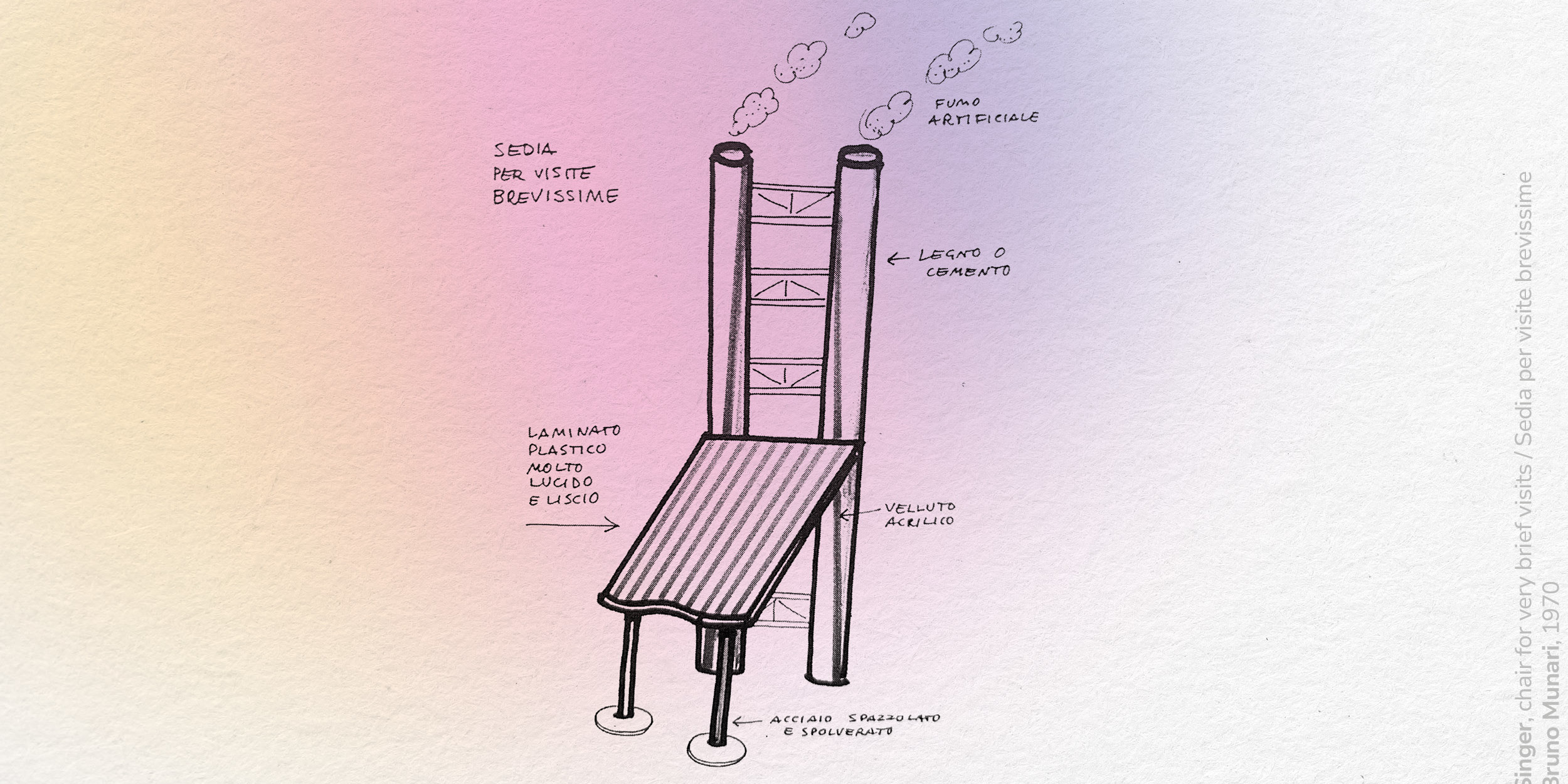Chairs are a strange kind of mirror. We sit on them for hours, we lean back, we grip their arms. Yet if we observe them closely, they reveal more than we think. They show us how we inhabit space, how we work, how we think. Bruno Munari once said, “Designing a chair means designing the body that will use it.” It wasn’t just a statement about industrial design, but an invitation to realise that every chair shapes the person sitting on it: it imposes postures, suggests durations, sets distances and degrees of intimacy.
We believe every gesture is an act of design, even choosing what to sit on. Observing chairs means reading our own cultural posture. That’s why we’ve created this small (semi-serious but methodical) map through design history and the psychology of inhabiting.

1. Bruno Munari’s “visite brevi o brevissime” chair
Munari designed it in 1945 as a conceptual provocation. An iron seat tilted forward, suspicious and slightly uncomfortable, intended for “very short visits”: the guest sits down but never relaxes, in fact, they slowly slide off. Needless to say, visits don’t last long. A design object can also be a psychological statement and social critique. This is the chair of someone who works with surgical efficiency: a minute longer would become an applied psychology session. If it could speak, it would say: “The exit is that way.”
2. Verner Panton’s Panton Chair
Designed in 1960 and mass-produced from 1967, it was the first chair made entirely from a single piece of moulded plastic. A pop icon of 1960s Danish design, it combined sculptural form with function, its S-shaped silhouette revolutionising the aesthetics of seating. This is the chair with the supple posture of someone who adapts to any change, but always with style. Today it sits in MoMA New York as a masterpiece of organic, industrial design. If it could speak, it would say: “I bend, but I don’t break.”
3. The Eames Lounge Chair by Charles and Ray Eames
Designed in 1956, it is the most iconic lounge chair in the world. Moulded wood, black leather, a posture that’s relaxed yet innately superior. Created to offer “the warmth and comfort of a well-worn baseball glove,” today it’s the throne of anyone who owns at least three volumes of critical theory and can quote Rem Koolhaas by heart – always with a gin and tonic within reach. If it could speak, it would say: “I’m working, even when I look like I’m on a break.”
4. The Aeron Chair by Herman Miller
Designed by Don Chadwick and Bill Stumpf in 1994, the Aeron Chair is the queen of contemporary ergonomics. Made of breathable mesh with no unnecessary padding, it offers infinite adjustments and has become a symbol of global smart working and tech office aesthetics. If it could speak, it would say: “My back comes first.”
Because chairs speak, too
Every chair is a personal manifesto: of power, comfort, or style. Observing it methodically, as we do with workspaces, means understanding who we are and who we want to be. In the end, that’s what design is about: interpreting details to create environments that truly reflect us. And this is where the Altis method comes in: analysing every choice, even the most seemingly banal, and transforming it into a conscious gesture aligned with how we live.


